Nendo carves "four-layered" vase from a single 100-kilo block of aluminium
Japanese studio Nendo and specialist metal company Wakazono have machined a 15-kilogram vase from a 100-kilogram block of aluminium in an intricate process that took seven months.
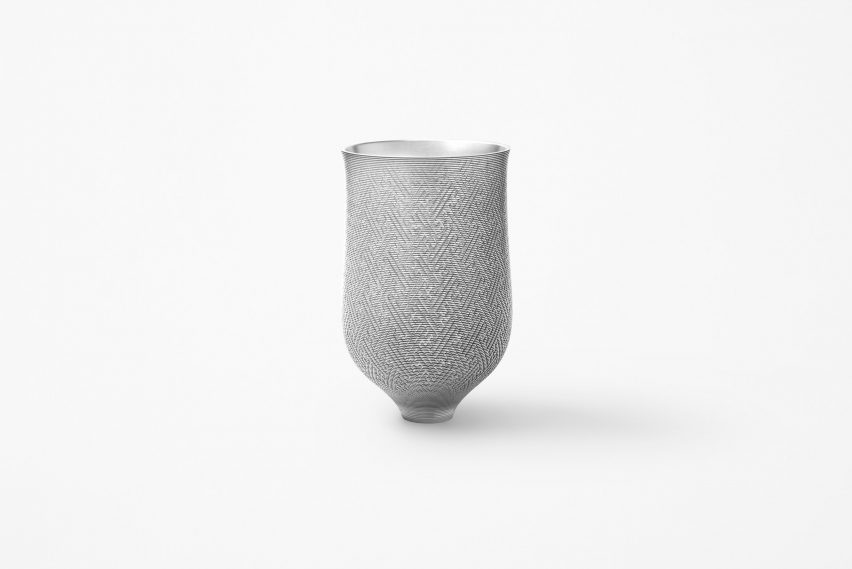
The surface of the vase has been precision milled with four layers of tiny grooves, which create different decorative patterns depending on the position of the viewer.
Using tiny cutters of less than a millimetre in diameter, the aluminium surface was repeatedly undercut to create a shimmering laced effect.
The form of the vase was first cut from a solid block of aluminium using a multi-axis milling machine. After this the complex surface pattern was created by milling multiple layers of channels of depths as little as half a millimetre.

The machining process was carried out at low speed over a period of months to ensure the aluminium did not overheat and melt, and to prevent the bit getting clogged by offcuts.
"Firstly, five-millimetre-deep grooves were carved in constant intervals on the vase's exterior, resulting in two different levels on the surface," said Nendo. "The first pattern was then carved two millimetres beneath the external surface, while the second pattern was carved six millimetre below the deeper immersed surface."
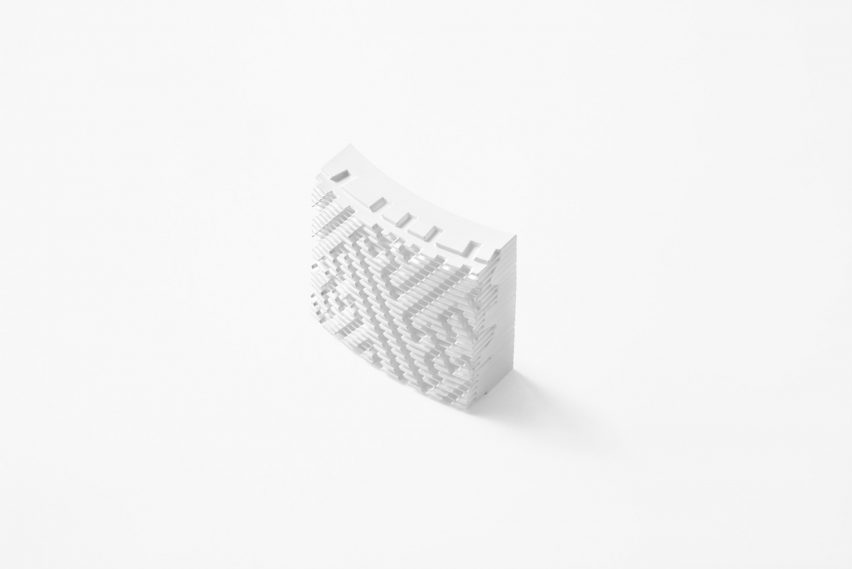
Nendo designed the Four Layer Vase as part of its Forms of Movement exhibition during Milan design week, which showcased designs from 10 different Japanese manufacturers using innovative materials and techniques.
The studio said the shifting pattern on the vase was intended to convey a feeling of movement while remaining stationary.
"Objects can physically move in reaction to our motion, or can encourage us to move in reaction to them," Nendo told Dezeen. "Movement is an inseparable part of our being; we move our bodies, we move objects, and there are objects that move independently around us."
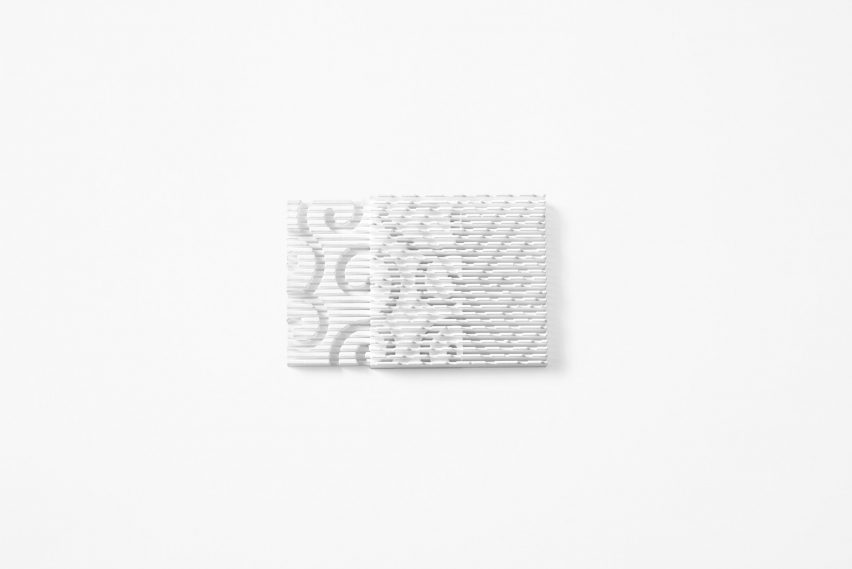
Nendo presented Four Layer Vase at Milan design week, which took place between 17 and 21 of April, as part of a solo exhibition titled Nendo: Forms of Movement.
Other highlights from the show included a series of four unconventionally shaped hourglasses, which attempts to "change the perception of the flow of time", and a range of kitchenware lids that imitate hand movements.
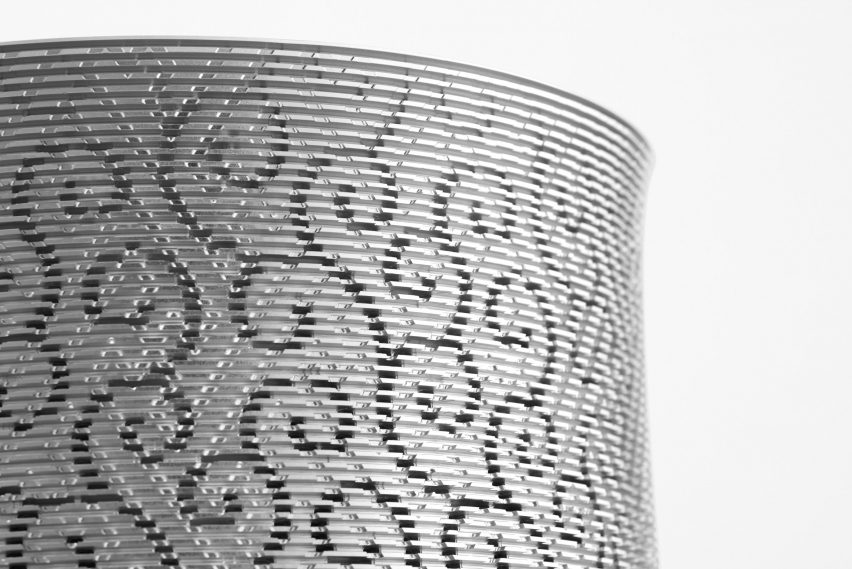
The studio provided a technical explanation of how the vase was machined.
"Firstly, grooves of five-millimetre deep and 1.8-millimetre width were carved in constant intervals on the vase’s exterior, resulting in two different levels on the surface," it wrote. "The first pattern was then carved two-millimetre deep from the external surface, while the second pattern was carved six-millimetre deep from the deeper immersed surface."
The studio also explained the reason for the seven-month process that saw 85-kilograms of aluminium painstakingly removed to create the 15-kilogram object.
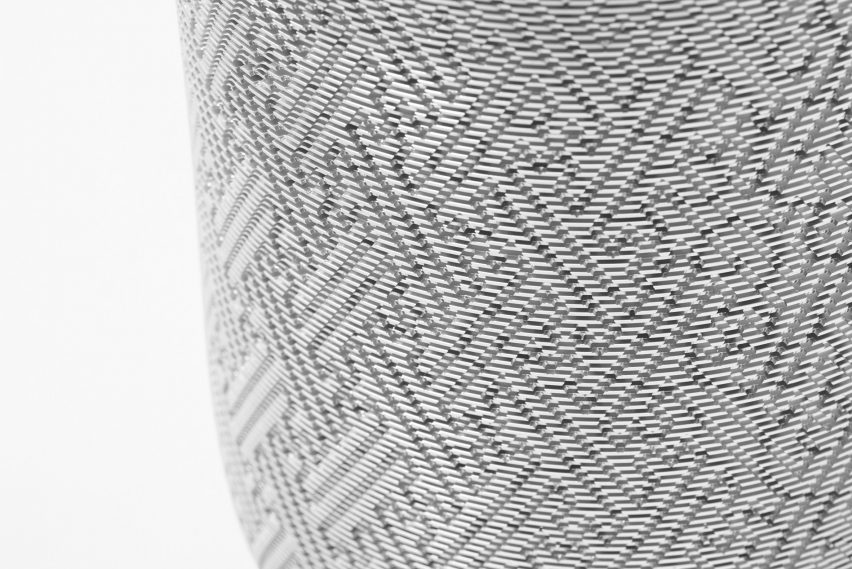
"By using multi-axis machinery, some grooves were carved to 1.8-millometre in width, and only one-millometre thickness at the edge," it said.
"These narrow dimensions cause complications, as the grooves can easily break due to clogging of scraping material. Furthermore, if the cutting speed is too high, the temperature of the cutter rises, and can cause metal distortions. Accordingly, the production’s duration and dimensions were carefully adjusted, and milling was done gradually in 0.5-millimetre-deep layers."
Nendo was the second-highest ranking designer on Dezeen Hot List 2017. It was founded in 2002 and has offices in Tokyo and Milan. It has worked on an unusually wide range of projects, including furniture, accessories and stationery.
Photography and film are by Akihiro Yoshida.